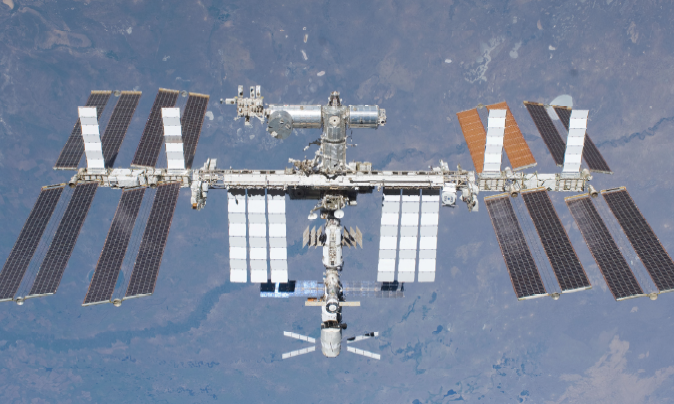[SatNews] In October 2013, the number of cataloged objects that posed potential threats to the ISS was in excess of 800...
Assessing potential close approaches of known space objects to the International Space Station (ISS) has been an integral part of ISS operations since the launch of the first element, the Zarya module, in November 1998. If a predicted conjunction yields a probability of collision greater than 1 in 10,000, official flight rules call for the execution of a collision avoidance maneuver by the ISS unless such a maneuver would lead to an even greater risk to the ISS or its crew. After a record number of four collision threats in 2012, no ISS collision avoidance maneuvers were required during 2013, reflecting the chaotic nature of the satellite population.

The International Space Station in 2011.
During its first 15 years of operations,the ISS successfully conducted 16 collision avoidance maneuvers, and on a separate ccasion in 1999 a planned maneuver attempt failed. In addition, three incidents arose when insufficient time permitted a collision avoidance maneuver, forcing the crew of the ISS to retreat to the Soyuz return craft during the time of closest approach, where they were prepared to undock from the ISS quickly in the event of a collision. In total, the collision avoidance maneuver threshold level has been reached only 20 times for an average of once per year.
However, the number of known objects that routinely transit the ISS orbital altitude is significant. In October 2013, the number of cataloged objects that posed potential threats to the ISS was in excess of 800, representing an increase of 60 percent from the population of November 1998 in an altitude region of ~415-420 km. Of these, 10 percent were spacecraft(operational and non-functional), a third were rocket bodies, and the remainder were miscellaneous debris. Although the individual masses of these objects varied from less than a kilogram to several metric tons, each was capable of inflicting serious damage to the ISS in the event of a collision.
Space objects in circular orbits intersecting the ISS altitude normally drop below the ISS orbit very quickly (days or weeks), although they intersect the ISS orbital plane up to 30 times per day. Objects in moderately or highly elliptical orbits (i.e.), eccentricities greater than 0.1) typically present threats over much longer periods (years), but they pose potential collision threats much less often, typically passing through the ISS altitude only a few times per day. More than 80 percent of the cataloged objects transiting the ISS altitude belong to the latter category. Unfortunately,the accuracies with which these orbits are maintained by the U.S. Space Surveillance Network (SSN) are normally less conduciveto high quality conjunction assessments due to fewer tracking opportunities and additional perturbation forces.
In addition to the cataloged satellites, the SSN maintains orbits on a large number (on the order of 5000 or more) of objects which have not yet been officially cataloged. For October 2013, the number of such objects with orbits passing through the ISS altitude regime exceeded 200. Three of the 20 close approaches noted above involved uncataloged objects, resulting in two collision avoidance maneuvers and one crew retreat to Soyuz spacecraft.
This report and others can be found here.

